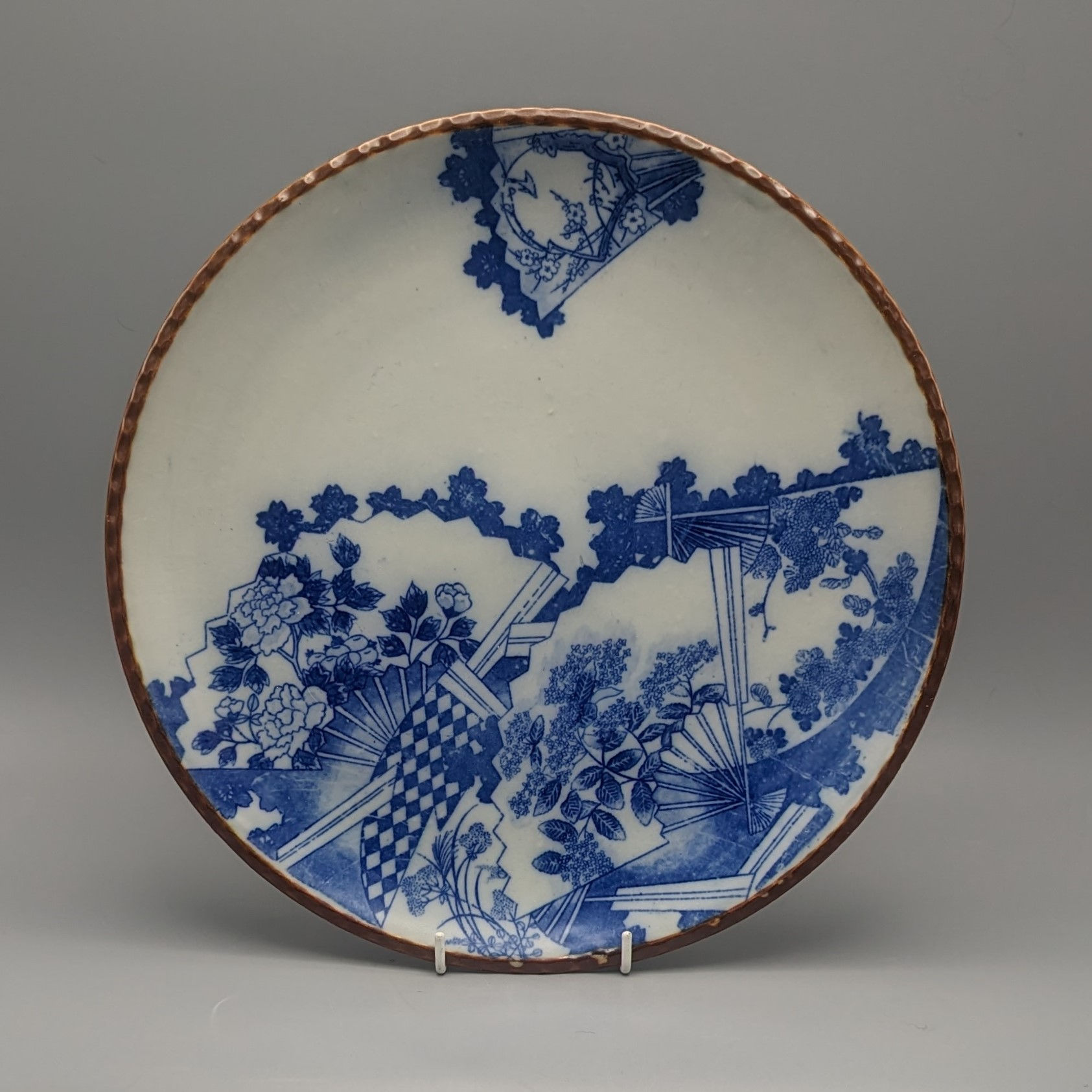19th C. Japanese Igezara Transferware Plate – “Fans Fringed with Flowers”
Meiji period (1868-1912) transferware plate.
Dimensions: Approximately 12¼” diameter.
Decoration:
The molded rim is edged with the typical brown band.
The center is decorated with numerous fans, both open and folded shut. The fans rest on cherry blossoms. The open fans are decorated with floral designs, including peonies and chrysanthemums.
This is pattern is described and illustrated by Alistair Seton in his book “Igezara Printed China” at p. 168 as “Fans Fringed with Flowers” and by Keigo Watanabe in his book “Igezara Museum” at p. 112.
The reverse of the rim is decorated with 3 sets of a pattern described by Alistair Seton as “Flowers and Arabesques with Long Whiskers”.
The foot is encircled by 3 blue bands.
The base has spur (kiln support) marks from firing.
The piece is heavily potted, as is the case with Igezara wares.
“Igezara" is a term applied to heavy, durable, everyday porcelain ware produced in Japan from near the end of the Edo Period (mid to late 1800's) until the early Taisho Period (early 1900's).
Unlike fine hand painted porcelain, like Imari and Kutani, Igezara pieces are transferware. They were produced by transferring designs initially created on copper plates, similar to transferware that was produced in Staffordshire England at the beginning of the 19th century.
Like English transferware, Izegara wares came into being at a time of industrialization, when a broad portion of the population desired attractive ceramics the design of which was influenced by more expensive porcelain.
Most Igezara wares are blue and white, although some have polychrome elements. Often the reverse of the rim bears decorative patterns.
The designs vary widely. Most include traditional Japanese elements like flowers, trees, or birds. Many incorporate geometric patterns.
Igezara pieces have a brown edge around a rim that has “pie crust” ridges molded into it. These elements give the transferware its name, which comes from two Japanese words: "Ige" meaning "notch or thorn", referring to the pie-like indentations found around the rim, and "Zara" or "sara" meaning "plate".
References:
Seton, “Igezara, Printed China”.
Watanabe, “Igezara Museum”.
Condition: In excellent condition consistent with age and usage. Please examine the photos; they are part of the description.



